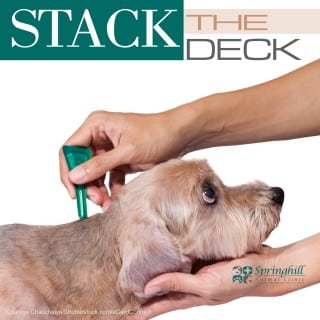Canine parvovirus (parvo) is the most common infectious disease among dogs. Spread via contact with contaminated feces, often by rodents or insects, the virus can live on objects and surfaces for as long as two years under the right conditions.
Many adult dogs who become infected show few, if any, symptoms. However, parvo is most common in dogs younger than 6 months and is most severe in very young puppies under 12 weeks of age. Although any breed of dog can contract parvo, Rottweilers, Dobermans and Labradors are especially susceptible. The most common form of parvo is an intestinal variety called parvovirus enteritis whose symptoms include vomiting, severe diarrhea (sometimes bloody) and dehydration. Extreme cases may also result in fever and decreased white blood cell counts. A parvo diagnosis is confirmed by lab tests, often of the dog’s stool. When the disease is confirmed, treatment consists largely of replenishing the fluids lost by vomiting and diarrhea. In severe cases, fluids may be given via IV. Antibiotics may also be given to protect against other infections. Because parvo is extremely contagious, it’s imperative in an outbreak that all items be washed and sanitized with a bleach solution. These include, but aren’t limited to, food bowls, flooring, kennels, toys and the clothing and shoes of pet parents.
Vaccines against parvo are available and effective. However, when to administer them can be tricky. Newborn puppies receive protective antibodies through their mother’s milk for the first 24 hours of life. After this, for a period of a few days to several weeks, the puppy’s immunity is not strong enough to protect from the virus, yet it’s too strong for the shot to be effective. This time gap is called the window of susceptibility, and it varies with every litter. We can work with you to determine the best time to vaccinate your pups against this potentially deadly disease.



